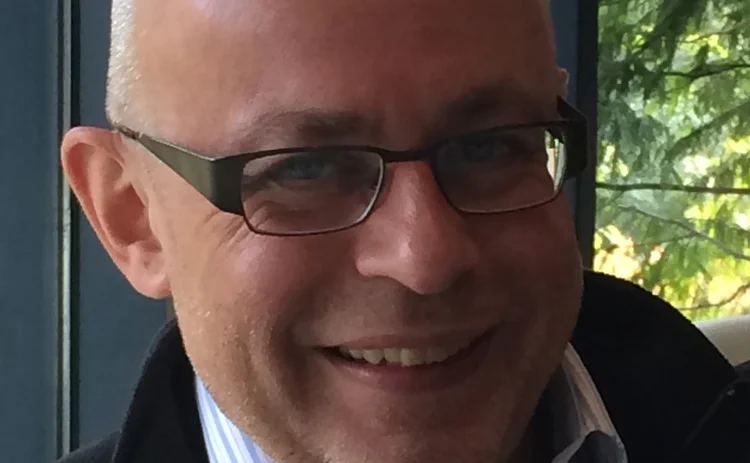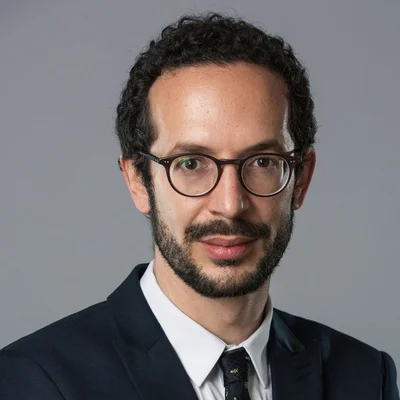
Quants of the year – Jim Gatheral and Mathieu Rosenbaum
Risk Awards 2021: Rough volatility models could make the options market more efficient

For almost 50 years, quants have sought to perfect the volatility models they use, together with the Black-Scholes formula, to come up with derivatives prices. Their efforts to capture market fluctuations have never quite reached the level of accuracy and tractability they would like.
In the past five years, though, a new family of models, known as rough volatility models, has sprung up. They are based on a mathematical process, largely ignored since the late 1960s, that their co-creator calls “God’s model” because it captures the patterns of market volatility so well. Arguably, this is the breakthrough that volatility quants have been waiting for.
“Research on volatility had stalled,” says Philippe Dumont, head of quantitative trading at Societe Generale in Paris. “Then, unexpectedly, such a big innovation arrives.”
High-frequency market-makers such as Jump Trading have adopted the models. Hedge funds hint at using them in arbitrage trading strategies. Banks are scrutinising the approach. SG is looking at using rough volatility in its market-making business and to improve its pricing of exotics, Dumont says.
The pioneers of the new models, Jim Gatheral, presidential professor of finance at Baruch College, City University of New York, and Mathieu Rosenbaum, professor of quantitative finance at the École Polytechnique in Paris, are Risk.net’s Quants of the Year.
“Had this technique appeared 10 years earlier, we’d probably be only talking about this and not about SABR,” says Pierre Laffitte, London-based head of quant trading at Jump Trading. The SABR (stochastic alpha beta rho) volatility model, introduced in 2002, is commonly used on derivatives desks across the industry.
Jean-Philippe Bouchaud, chairman of Paris-based hedge fund Capital Fund Management, thinks quants would “clearly” favour the rough volatility model if they were “starting from scratch” today. CFM uses models that include the key elements of the approach, says Bouchaud, who has been a sounding board for Gatheral and Rosenbaum throughout their work.
Rough volatility has garnered attention, first in academic circles and then in the industry. A website that collects material on the approach includes more than a hundred papers. Different versions have been developed to work with existing popular models such as the Bergomi model and the Heston model.
In one application last year, Gatheral and Rosenbaum, using the so-called quadratic Heston model, solved a long-standing puzzle in options markets — modelling the implied volatilities jointly for Vix and S&P options despite the known but hard-to-model divergence between them. That advance alone could permanently narrow the bid/ask for Vix options, Dumont says.
Equally, the models may yield up other trading opportunities, says Bouchaud. “With a good model for the underlying, which is what rough volatility is about, you’re bound to capture systematic biases in the way the option market functions.”
Beyond randomness
Gatheral and Rosenbaum introduced the concept of rough volatility in a 2014 paper co-authored with Thibault Jaisson, Rosenbaum’s PhD student at the time.
Seeing that volatility follows a less regular path than charted by existing models, the quants turned away from the maths of classical Brownian motion used in other approaches. Instead, the rough volatility model uses a variant called fractional Brownian motion, introduced by French mathematician Benoit Mandelbrot in the late 1960s but scarcely used since.
Fractional Brownian motion uses a parameter, the Hurst parameter (H), that regulates the dependency of current observations on previous ones. For H greater than 0.5, variations are positively correlated. As H approaches one, the process generates a path that gets smoother and smoother. At H equals 0.5 the variations are uncorrelated, as in normal Brownian motion with its random increments. And for H smaller than 0.5, variations are negatively correlated and the resulting path draws the characteristic rough pattern.

The rough volatility model is based on the assumption that the logarithm of the instantaneous volatility is well approximated, at a daily scale, from the statistical viewpoint, by a particular specification of fractional Brownian motion. Gatheral and Rosenbaum argued in their 2014 paper that a fractional Brownian motion with H of 0.1 is the process most consistent with the underlying data. “Now, I think H is typically closer to 0.05,” Gatheral says.
Rough volatility resulted not from a eureka moment but from incremental steps Gatheral and Rosenbaum made over the years, with the contribution of other researchers who worked with them.
Gatheral first became interested in volatility modelling at the beginning of the 1990s when he headed FX options for Bankers Trust in Tokyo. Subsequently, while leading equity quant research at Merrill Lynch, he saw patterns in the tick-by-tick data of market microstructure that shaped his ideas on how volatility behaves.
Then, in 2012, Gatheral was shown an application of fractional Brownian motion originally developed by Elisa Alòs and became quickly convinced the true model of volatility must follow that form. “I knew it had to be correct. I started to call fractional Brownian motion God’s model,” he says. “But I had no evidence yet, and I couldn’t generate any term structure of volatility with it.”
Rosenbaum at the École Polytechnique, meanwhile, had studied the estimation of the H parameter as part of his PhD thesis. “I was always amazed by the beauty of mathematics, but at the same time I always wanted to work on financial mathematics with real applications in practice,” he says.
Gatheral and Rosenbaum have been collaborating since 2009. “We understood from the microstructural foundation that rough volatility is the only behaviour consistent with no statistical arbitrage,” explains Rosenbaum. “It can be mathematically shown that in a market where statistical arbitrage is not possible, the volatility process is necessarily a rough volatility process.”
Matching smiles
Already the theory has shown its practical worth. The work last year on modelling Vix and S&P options in a single framework – a problem that has eluded volatility quants for more than a decade – has implications for banks and buy-siders.
Despite sharing the S&P index as their underlying, the implied volatilities of Vix and S&P options differ, which creates discrepancies in modelling frameworks in banks. A bank essentially could end up with two readings for implied volatility. That opens them up to the risk of being arbitraged by hedge funds on trades where one option is used to hedge positions in the other – a very common occurrence.
An accurate model that is able to calibrate the volatility smiles for both options would detect trading opportunities when the two values diverge. “I occasionally used to join our colleagues in sales to visit clients, sophisticated hedge funds, and they would ask me how to exploit those mispricings in the vol market,” says one former head quant at a bank. “Despite trying repeatedly, I did not have a solution.”
Julien Guyon, senior quant at Bloomberg, made a first step in solving the problem when he proved the existence of a condition that a solution must necessarily possess. The condition relates to the comparison between the values of a popular volatility model and that of the instantaneous Vix.
Rosenbaum attended a presentation by Guyon and realised immediately how important the work could be. “I thought the property needed for the solution could be found by working on the quadratic rough Heston model,” he says.
That model in turn is an extension to the rough volatility model and had been introduced in 2019 by Rosenbaum and Omar El Euch, a quantitative trader at Tower Research Capital.
The application of the rough vol model will make the Vix option market become more efficient
Huaming Jin, Luoshu Investments
By April 2020, Gatheral and Rosenbaum, with Paul Jusselin, a PhD student at École Polytechnique, had published a paper in which they tackled the joint calibration of volatility smiles. The solution combines rough volatility and empirical work on the evolution of price trends and volatility through time.
Quant funds are alert to the opportunity such work presents.
Based in Paris, Huaming Jin is co-head of option trading at Luoshu Investments, a Shanghai-headquartered systematic hedge fund that manages 3 billion yuan ($460 million). Luoshu plans to build a US business leveraging the pricing advantage of rough volatility models to trade SPX/Vix options arbitrage, he says. “Later we will be very interested in the Vix option market-making business.”
Several of the hedge fund’s quants studied at École Polytechnique and are familiar with Rosenbaum’s work. In 2019, Rosenbaum visited their office and presented rough volatility models. Since then, Luoshu has worked on applying the models in its business.
Jin says the model allows the firm to better price and hedge derivatives, identify mispricing in option markets and to quote more competitive bid/ask prices. “The application of the rough vol model will make the Vix option market become more efficient,” he predicts.
At this point the new models mostly have been adopted by hedge funds and non-bank market-makers. Banks have been slower movers. But that also may be set to change.
“Many in banks are happy with using local volatility because the whole infrastructure is already there,” Bouchaud says. “Adopting rough volatility is a huge IT challenge. They don’t really see what upside you might get from starting from a clean slate again.”
Machine learning has been proposed as a way to speed up the calibration of the model. And Gatheral and Rosenbaum are planning to enhance the numerical simulation, devising one that is suitable to calibrate all versions of their model.
For a process with a memory component — that is to say, one where the past steers the path of future outputs — such a task is challenging but possible.
“I believe we are close,” Gatheral says. “This project will lead us to a deeper understanding of these models. And with that will come greater simplicity and ultimately more beauty.”
Only users who have a paid subscription or are part of a corporate subscription are able to print or copy content.
To access these options, along with all other subscription benefits, please contact info@risk.net or view our subscription options here: http://subscriptions.risk.net/subscribe
You are currently unable to print this content. Please contact info@risk.net to find out more.
You are currently unable to copy this content. Please contact info@risk.net to find out more.
Copyright Infopro Digital Limited. All rights reserved.
As outlined in our terms and conditions, https://www.infopro-digital.com/terms-and-conditions/subscriptions/ (point 2.4), printing is limited to a single copy.
If you would like to purchase additional rights please email info@risk.net
Copyright Infopro Digital Limited. All rights reserved.
You may share this content using our article tools. As outlined in our terms and conditions, https://www.infopro-digital.com/terms-and-conditions/subscriptions/ (clause 2.4), an Authorised User may only make one copy of the materials for their own personal use. You must also comply with the restrictions in clause 2.5.
If you would like to purchase additional rights please email info@risk.net
More on Awards
Collateral management and optimisation product of the year: CloudMargin
Delivering the modern blueprint for enterprise collateral resilience
Flow market-maker of the year: Citadel Securities
Risk Awards 2026: No financing; no long-dated swaps? “No distractions,” says Esposito
Pricing and analytics: fixed income – Quantifi
Quantifi delivers high-performance, transparent and adaptable pricing and risk analytics for fixed income and credit markets
Derivatives house of the year: Citi
Risk Awards 2026: Rev up, RWAs down, as US bank gets back on track (with added XiNG and XiP)
Technology vendor of the year: SS&C Algorithmics
Risk Awards 2026: From cloud, to chips, to maths tricks – vendor getting more out of existing tech
SS&C Algorithmics: winner’s interview with Curt Burmeister
SS&C Algorithmics wins three categories in this year’s Markets Technology Awards in addition to Technology vendor of the year at the Risk Awards
Best vendor for system support and implementation: Murex
Murex wins Best vendor for system support and implementation at the Markets Technology Awards 2026
Pricing and analytics: cross-asset and structured – Murex
Murex wins Pricing and analytics: cross-asset and structured at the Markets Technology Awards 2026 thanks to its MX.3 platform







